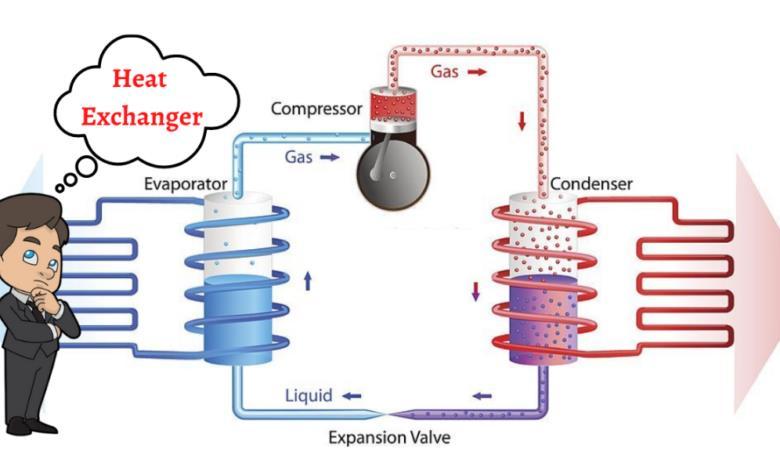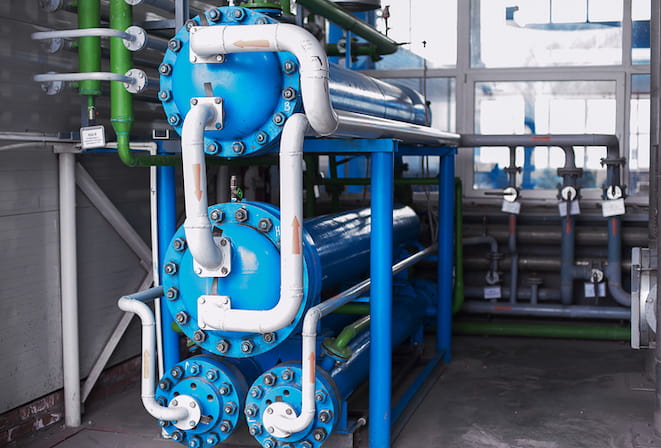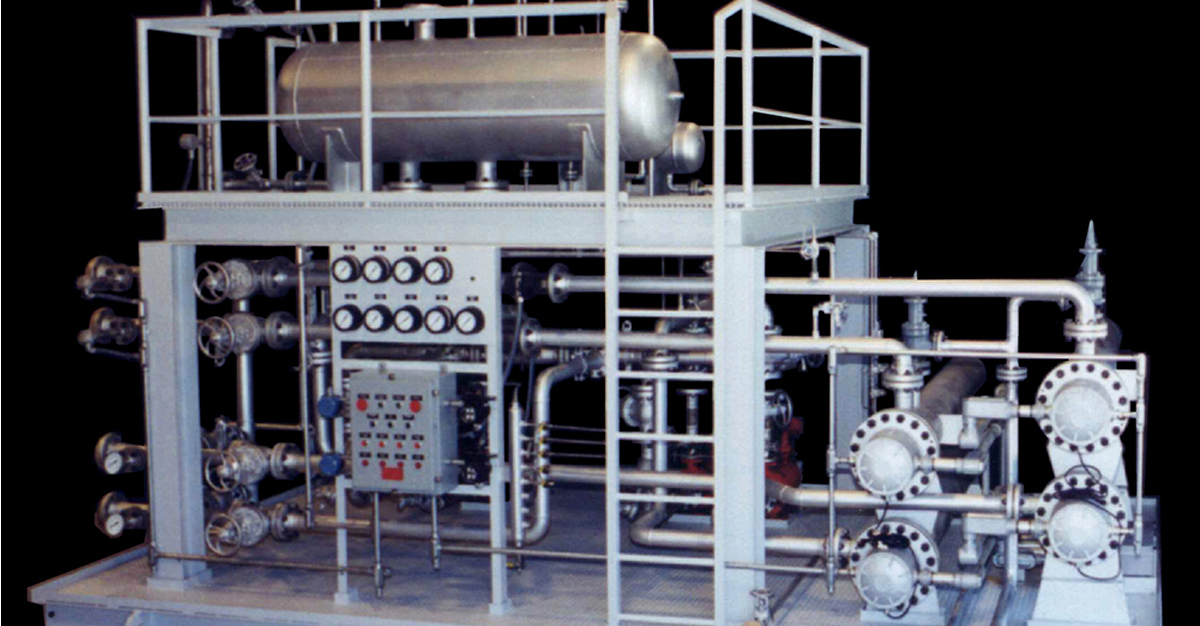Innovations in Heat Transfer Solutions: What You Required to Know for Ideal Performance
Technologies in Heat transfer systems are changing efficiency across different markets. Advanced products like graphene and nanofluids promise significant enhancements in thermal conductivity. On the other hand, the assimilation of IoT and device understanding supplies possibilities for real-time tracking and improved energy effectiveness. However, the landscape of thermal administration is swiftly progressing (DVS Heat Transfer Systems). Recognizing these advancements is necessary for accomplishing perfect system performance and sustainability in the future. What details innovations are forming this improvement?
Emerging Products for Boosted Heat Transfer

Advanced Heat Exchanger Layouts
While typical Heat exchangers have served their objective in various applications, progressed designs are now arising to satisfy the boosting needs for performance and performance. These ingenious designs, such as plate, shell-and-tube, and finned-tube Heat exchangers, incorporate boosted surface and enhanced circulation patterns to boost thermal transfer prices. Furthermore, small styles permit reduced space demands without jeopardizing efficiency. Advanced products, such as composites and corrosion-resistant alloys, furthermore enhance resilience and efficiency under extreme problems. Simulation technologies and computational liquid characteristics are significantly employed to refine these styles, guaranteeing peak Heat transfer attributes. As industries seek to lessen power consumption and maximize result, the fostering of advanced Heat exchanger designs is essential in accomplishing these objectives.
The Function of Nanotechnology in Heat Transfer
Nanotechnology plays an important duty in improving thermal conductivity within Heat transfer systems. By controling materials at the nanoscale, scientists have achieved substantial renovations in power performance. These advancements not just enhance efficiency but likewise add to even more lasting power remedies.
Improved Thermal Conductivity
Considerable advancements in thermal conductivity have emerged with the application of nanotechnology, changing Heat transfer systems throughout different markets. By integrating nanoparticles into Heat transfer liquids and materials, researchers have actually attained remarkable increases in thermal conductivity. These nanoparticles, such as carbon nanotubes, graphene, and steel oxides, improve the Heat transfer residential or commercial properties due to their high area and distinct thermal attributes. The resulting composites exhibit enhanced performance in applications ranging from electronics cooling systems to sustainable energy innovations. Furthermore, the capability to tailor the size, form, and composition of nanoparticles permits for optimized thermal monitoring options. As a result, nanotechnology remains to play a crucial role in the growth of extra effective and effective Heat transfer systems, paving the method for enhanced industrial applications.
Power Performance Improvements

Integration of IoT in Heat Transfer Equipments
The combination of IoT in Heat transfer systems introduces the implementation of wise sensors that boost functional effectiveness. These sensing units enable real-time information monitoring, permitting immediate modifications and optimizations. This technological advancement has the possible to considerably enhance performance and power management in Heat transfer applications.
Smart Sensors Application
As Heat transfer systems evolve, the assimilation of smart sensing units via the Internet of Points (IoT) has actually arised as a transformative method. These sensors make it possible for real-time tracking of temperature, pressure, and flow rates, boosting system performance and dependability. By gathering and sending data, they promote aggressive upkeep, reducing the risk of system failings. Furthermore, clever sensing units add to power cost savings by refining operational criteria based on environmental problems. Their ability to assess anomalies and trends enables informed decision-making, making sure peak performance of Heat transfer useful source systems. As industries significantly adopt this technology, the execution of smart sensing units stands to transform exactly how Heat transfer systems are handled, paving the means for better sustainability and enhanced performance outcomes.
Real-Time Information Surveillance
Just how can real-time data keeping track of improve the efficiency of Heat transfer systems? By incorporating Internet of Points (IoT) innovation, Heat transfer systems can utilize continuous information collection from wise sensors. This real-time surveillance permits immediate evaluation of temperature, stress, and circulation prices, making it possible for drivers to recognize inadequacies promptly. Consequently, modifications can be made to enhance performance, lower energy consumption, and extend tools life expectancy. Additionally, predictive upkeep can be executed, minimizing unforeseen downtime and costly repair work. The capacity to picture efficiency metrics via dashboards enhances decision-making, cultivating an aggressive approach to system management. Ultimately, real-time information keeping an eye on not just boosts operational performance but likewise contributes to sustainability goals within industrial processes.
Energy Effectiveness and Sustainability Trends
Power effectiveness and sustainability trends are improving the landscape of Heat transfer systems, driving technology and compliance across different sectors. Organizations are significantly focusing on energy-efficient styles to minimize operational prices and lessen environmental influences. The integration of eco-friendly power resources is becoming much more common, enabling Heat transfer systems to operate sustainably while fulfilling special info governing needs. Additionally, improvements in products and technologies promote reduced energy consumption and boost total performance. Lifecycle analyses are additionally obtaining traction, enabling firms to assess the ecological effect of Heat transfer systems from production to disposal. This concentrate on sustainability not only sustains business duty however additionally positions organizations competitively in a market where customers significantly prefer environment-friendly options. Consequently, energy performance and sustainability stay crucial considerations for future developments in Heat transfer technology.
Advancements in Thermal Administration Solutions
While the need for reliable Heat transfer continues to rise, innovations in thermal monitoring services are arising to resolve both performance and sustainability challenges. Advanced products, such as phase adjustment materials and nanofluids, are being established to boost Heat transfer effectiveness - DVS Heat Transfer Systems. These materials improve thermal conductivity and permit far better temperature level guideline in different applications. Additionally, modern technologies like active thermal control systems are obtaining grip, enabling real-time modifications to handle Heat flow successfully. These systems contribute to power savings and reduce the ecological effect of thermal procedures. The assimilation of IoT in thermal monitoring promotes surveillance and anticipating upkeep, making sure enhanced efficiency and long life of Heat transfer systems. On the whole, these innovations represent significant strides towards more sustainable thermal administration techniques
Future Directions in Heat Transfer Modern Technology
Arising advancements in thermal management options indicate an appealing future for Heat transfer technology. Researchers are progressively focusing on establishing products with superior thermal conductivity and enhanced energy efficiency. Technologies such as nanofluids, which have suspended nanoparticles, use substantial renovations in Heat transfer performance. Additionally, the combination of smart products that adapt to varying temperature level problems is obtaining grip, enabling even more receptive and reliable systems. The surge of additive production techniques is likewise allowing the style of intricate Heat exchanger geometries that optimize liquid flow. Additionally, the implementation of equipment discovering algorithms is anticipated to reinvent the optimization of Heat transfer systems, promoting anticipating upkeep and performance improvement. Jointly, these innovations are poised to transform the landscape of Heat transfer innovations in various markets.

Frequently Asked Inquiries

Exactly how Do I Select the Right Heat Transfer System for My Application?
Picking the appropriate Heat transfer system includes evaluating application requirements, consisting of temperature level ranges, liquid properties, and efficiency needs. Examining system kinds, maintenance considerations, and cost-effectiveness also plays an essential role in making an informed choice.
What Are the Maintenance Needs for Advanced Heat Exchangers?
Upkeep needs for innovative Heat exchangers commonly include routine evaluations, checking for leakages, cleaning of surfaces, and ensuring excellent flow rates. Following producer standards assurances efficient procedure and prolongs the tools's life expectancy.
Exactly How Do Environmental Elements Influence Heat Transfer Effectiveness?
Ecological elements substantially influence Heat transfer effectiveness. Variations in air movement, moisture, and temperature level impact thermal conductivity and convective Heat transfer, inevitably affecting system performance and necessitating factor to consider during the style and procedure of Heat transfer systems.
What Safety Requirements Relate To Heat Transfer Systems?
Safety criteria for Heat transfer systems normally consist of standards from companies such as ASME and ASTM. DVS Heat Transfer Systems. These criteria address materials, layout, and operational methods to ensure dependability, efficiency, and security against hazards in different applications
Exactly How Can I Troubleshoot Typical Heat Transfer System Issues?
Repairing common Heat transfer system problems entails looking for leaks, ensuring appropriate liquid flow, examining insulation stability, and verifying temperature differentials. Determining these aspects can aid preserve system performance and prevent further problems.
Nanotechnology plays a vital function in enhancing thermal conductivity within Heat transfer systems. Significant innovations in thermal conductivity have emerged with the application of nanotechnology, revolutionizing Heat transfer systems across numerous markets. Innovations in thermal conductivity through nanotechnology have actually paved the method for exceptional improvements in power performance moved here within Heat transfer systems. Energy efficiency and sustainability patterns are improving the landscape of Heat transfer systems, driving innovation and compliance throughout various sectors. The assimilation of IoT in thermal administration facilitates monitoring and predictive maintenance, ensuring optimized performance and durability of Heat transfer systems.